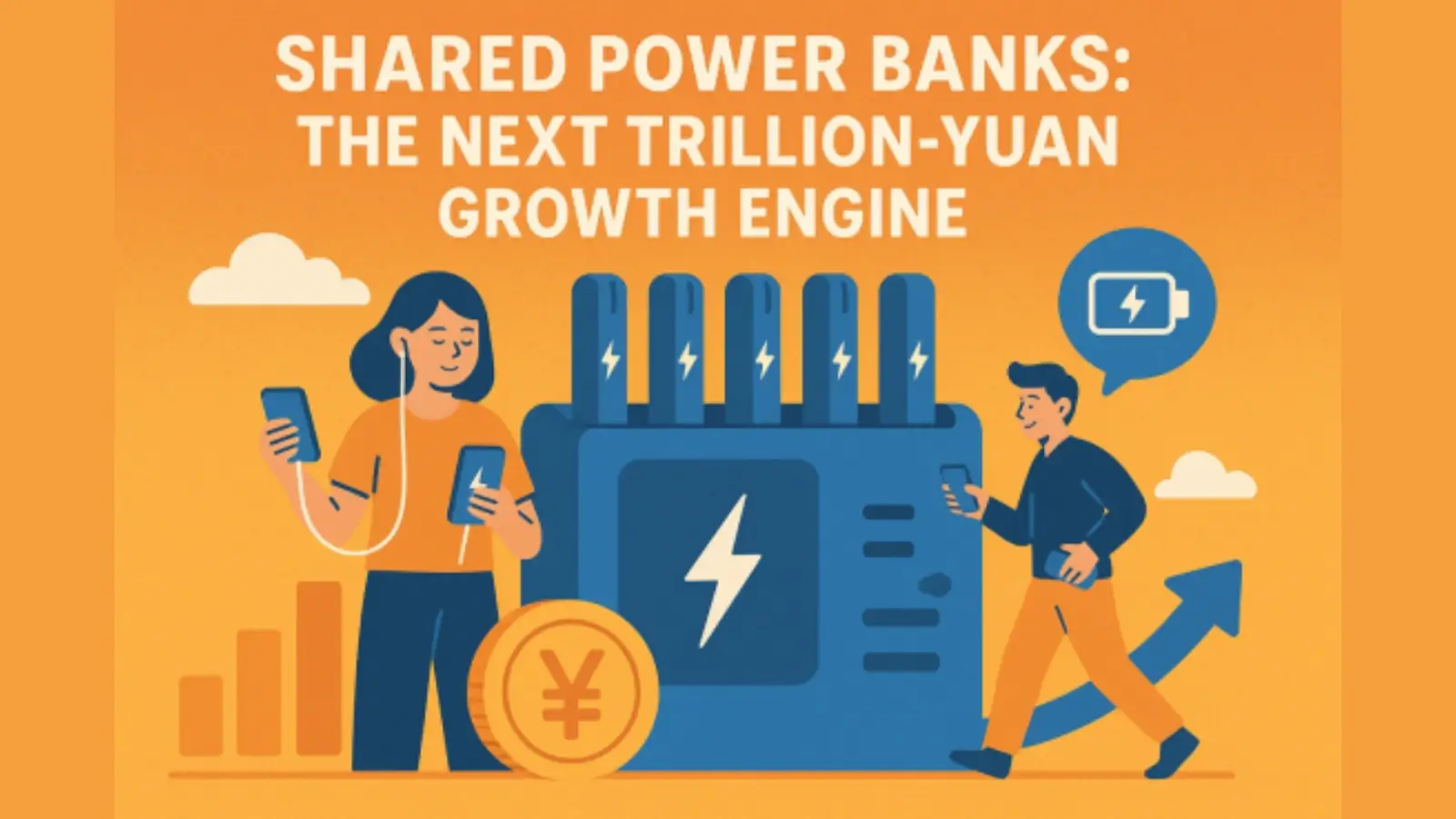


As mobile device functionality evolves at lightning speed, one limitation remains constant — battery life. Shared power banks, a business model already integrated into everyday life across China, are now gaining unprecedented momentum overseas. They’re emerging as a new benchmark for the global sharing economy — and the next trillion-yuan market opportunity.
In China, the shared power bank sector has already reached maturity. According to iResearch, China’s mobile internet users are projected to hit 1.08 billion by 2022. Between 2017 and 2021, mobile internet traffic grew rapidly, with another surge expected in 2022. This massive user base provides a solid foundation for the shared charging industry.
By 2023, the number of shared power bank users in China had exceeded 400 million, and the market surpassed 20 billion RMB in scale. After years of fierce competition and market consolidation, the industry has entered a stable growth phase, with top players now seeking new frontiers.
“What we’ve seen in China is not saturation — it’s optimization. The next chapter of growth will be global.” — Chen Hao, Senior Analyst, iResearch Consulting Group
Globally, the opportunity is even more promising. According to Grand View Research, the global power bank market was valued at USD 13.48 billion in 2022 and is expected to reach USD 31.06 billion by 2030, with a CAGR of 8.3%. Within that ecosystem, shared power banks are poised for exponential growth as a frictionless charging solution.
The foundation of this market’s valuation lies in clear and robust business logic spanning users, merchants, and platforms.
For users, paying just a few dollars to avoid the risk of losing a deal, missing a flight, or breaking a social connection due to a dead phone is an easy decision. The pain point is sharp, and the solution is cheap.
For restaurants, bars, and shopping malls, shared power bank stations are not just a convenience — they are profit-generating IoT devices. These stations require no staff management yet provide steady commission income, transforming physical venues into monetizable data nodes.
Each shared power bank station acts as an IoT node in the physical world. When networked together, they form a massive grid of real-world behavioral and location data, enabling targeted marketing, partner integrations, and predictive analytics.
The power of shared charging lies in scene penetration — how deeply it integrates into daily environments.
Dining and entertainment venues remain the foundation, accounting for over 85% coverage. From chain restaurants to small cafés, deployment density continues to rise.
Transportation hubs such as airports, train stations, and metro lines are now high-value hotspots. Although entry costs are higher, user demand is strong and usage frequency stable.
Public service spaces like hospitals, government halls, libraries, and schools are becoming new growth engines. Due to long dwell times, these locations often achieve 1.5–2x higher revenue per device compared to average sites.
Niche areas such as tourist attractions, campuses, and outdoor festivals offer high single-use spending and minimal competition — making them extremely profitable.
“Scene diversity is the lifeline of shared charging. Each new venue type is a new stream of cash flow.” — David Zhang, VP of Global Expansion, Monster Charge
This localized approach helps Chinese operators quickly penetrate international markets.
Early profits relied heavily on rental income. But as competition matured, top players evolved toward multi-revenue models.
“Shared charging is quietly becoming a mini-media network — each screen, a digital billboard.” — Elena Rossi, Mobile Marketing Strategist, Adweek Europe
The value of shared charging now extends far beyond simple fees — it’s becoming part of the retail infrastructure.
Take STW for example: it integrates power bank services with hospitality, tourism, and F&B partners. A restaurant offering STW’s charging solution may receive higher in-app ranking visibility, driving more customer visits — forming a loop of service → traffic → data → optimization.
Furthermore, anonymized usage data from charging stations offer insights into footfall, dwell time, and user behavior — critical for smarter retail strategies.
While the growth is remarkable, challenges persist. Advances in battery and fast-charging technology could reduce dependency, while hardware depreciation and location competition pressure profits.
Yet opportunities abound. 5G networks, foldable devices, and the global digitalization wave all increase energy demand — expanding shared charging’s relevance.
“Every new device category creates new charging demand. The industry’s ceiling keeps rising.” — Paul Nguyen, Senior Analyst, Grand View Research
The rise of shared power banks is one of the most successful stories in the sharing economy. From easing “battery anxiety” to enabling smart urban ecosystems, this model has unlocked a market worth hundreds of billions — and counting.
Gloally, penetration remains low, especially in developing regions where smartphone adoption continues to surge. As digital lifestyles expand, so will the need for convenient, on-demand energy.
Shared power banks are not just powering devices — they’re powering the next phase of global connected living.
“In the coming decade, portable power will be as essential as Wi-Fi.” — Global Tech Outlook, 2024 Industry Report